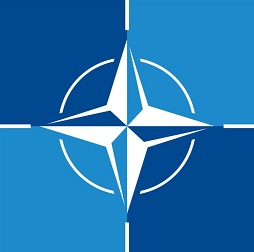It's obvious from news coverage that NATO deals with defence. After all, news stories about NATO always feature images of the armed forces. But what is NATO actually for? Taking that question literally provides an interesting answer.
During the Cold War, it was easy to explain and to understand what NATO did: it was there to defend against and to deter Warsaw Pact aggression. Not everyone agreed with it – or necessarily felt that it was going about it in the best way – but the role was clear.
Fast-forward to the present day, and NATO has risen to a succession of challenges, and a continuously changing security environment. The confrontation of the Cold War was followed by an energetic period of co-operation among former adversaries as the Euro-Atlantic security architecture adjusted to the end of the Warsaw Pact and the dissolution of the Soviet Union. NATO also turned its hand to leading peacekeeping forces in the Balkans and then Afghanistan, confronting piracy off the Horn of Africa, patrolling the Mediterranean to prevent transfers of weapons of mass destruction, and much else besides.
NATO's Beginning
NATO was founded in 1949 to show a united front against the Soviet Union which did not demobilize its armed forces after the Second World War, and which was increasingly threatening elected governments across Western Europe. The Alliance was also seen as a means of encouraging European cooperation, and ensuring that the United States maintained a strong, reassuring presence in Western Europe.
It isn’t the only organization able to deliver on certain aspects of security – the United Nations, the OSCE, and the European Union immediately spring to mind – but no NATO member could, hand-on-heart, say that any other body is more vital to their own security. Even if one or two of them might prefer otherwise…
But despite NATO’s commendable agility in adapting to new circumstances, the question keeps cropping up: what is NATO for?
Usually, answers to that question are quite long, because they focus on what NATO does. For a shorter answer that might surprise people with only a passing (and therefore perfectly normal) interest in NATO, take the original question literally: “What is NATO for?” – as opposed to, “What is NATO against?”
The point is that NATO isn’t defined by what it is against, but by what it is for. And that’s easy to answer, because it’s right there in the Treaty, in the very first paragraph: the Parties “are determined to safeguard the freedom, common heritage and civilisation of their peoples, founded on the principles of democracy, individual liberty and the rule of law.”
It is that commitment to shared values that underpins the Alliance. It isn’t open to countries that don’t share them, and even though the odd member might occasionally look a little wobbly on the values front, the Alliance as a whole is defined by its commitment to democracy, liberty, and rule of law.
That commitment guides NATO’s actions and is the framework for its adaptation to whatever challenges it faces. So, what is NATO is for? For the defence of a community of North American and European nations with a shared belief in democratic values.
How it does that, is a different question.
The Warsaw Pact
The Warsaw Treaty Organization – known in the West mainly as the “Warsaw Pact” – was founded in 1955 by the Soviet Union and its Central and Eastern European satellite states. The two “blocs” – Eastern and Western – were ideologically opposed, and existed in a state of armed tension – the Cold War – until the fall of the Berlin Wall in 1989 and the formal dissolution of the Warsaw Pact in 1991
ATA UK 10 February 2021

